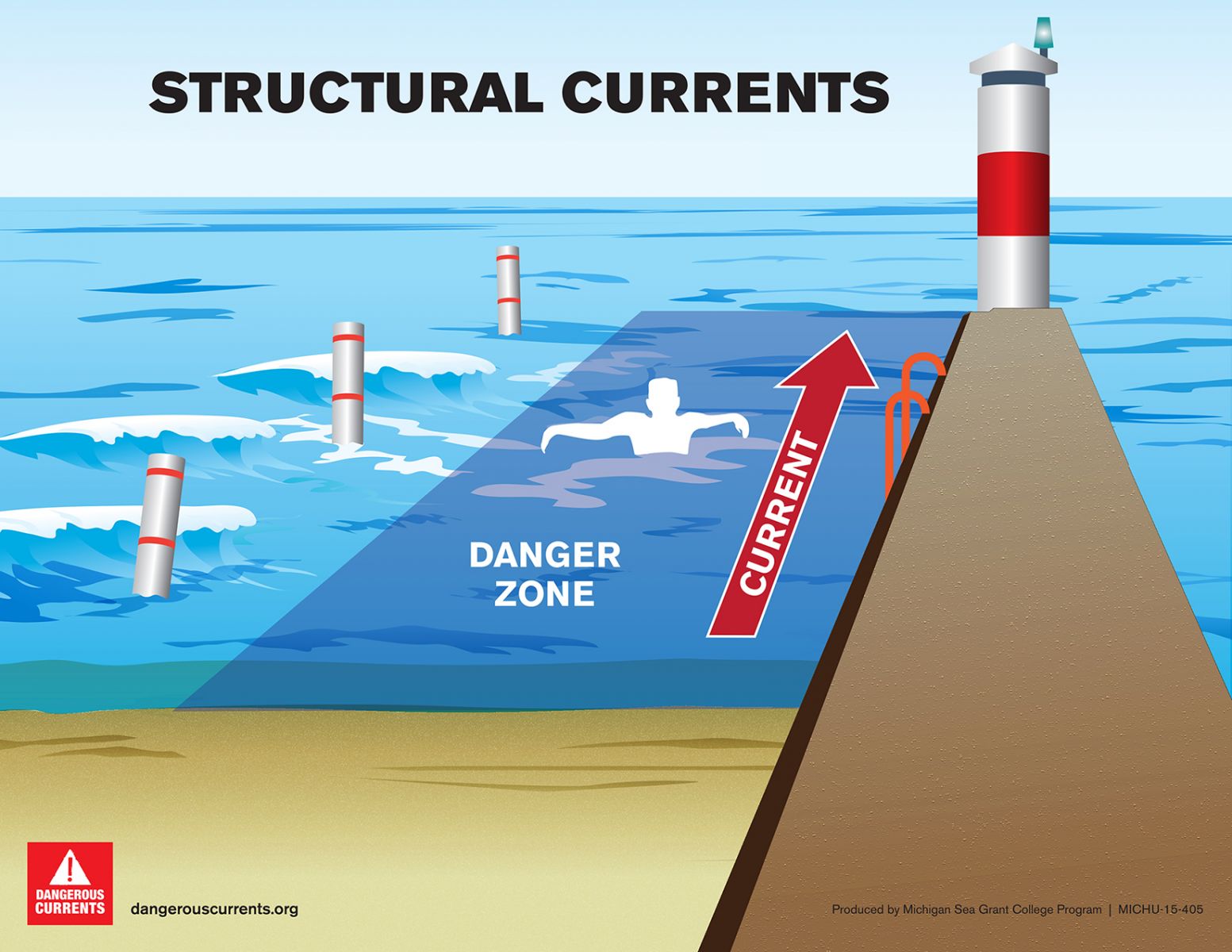Gusty southwest winds will result in high and rapidly breaking waves along the Lake Michigan beaches of northwest lower Michigan from Grand Traverse Light to Manistee. This high wave action will create hazardous currents, including rip currents, along the shore.
Heading into the water? Enjoy yourself, but be careful:
Structural Currents
 Structural currents are most prevalent when high wave action breaks on the shore at an angle. With this wave direction, water piles up near the shore and a current forms in between the sandbars and flows parallel to the shore (known as a longshore current). When this longshore current interacts with a structure, such as this pier in Frankfort, the current gets deflected out toward the lake.
Structural currents are most prevalent when high wave action breaks on the shore at an angle. With this wave direction, water piles up near the shore and a current forms in between the sandbars and flows parallel to the shore (known as a longshore current). When this longshore current interacts with a structure, such as this pier in Frankfort, the current gets deflected out toward the lake.
In this example, a north to northwest flow would cause a longshore current to develop north of the pier, ultimately being deflected forcing the current to run parallel to the pier and out toward the lake. A swimmer caught in this situation has little means of escape, as the main flow is directing you either toward the pier or out toward the lake. The high, rapidly breaking waves would make you feel like you're swimming in a washing machine, and it would not be fun to get swept against those rocks! When the surf is high, avoid walking on, and swimming around structures that jet out toward the lake!
For additional information on weather conditions across the rest of Michigan, visit the National Weather Service web pages from Grand Rapids, Detroit, and Marquette.
To learn more about the threat of high waves, as well as the various types of dangerous currents that can develop at the beaches today, please visit the Great Lakes Beach Hazard Page.